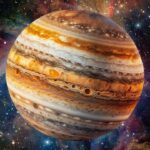
📷 Image Credits: CGTN
China’s lunar exploration program achieved a major milestone with the successful completion of the Chang’e-6 mission, which returned the first-ever samples from the far side of the moon. The reentry module of the lunar module landed in China’s northern Inner Mongolia region, marking a historic moment for the country’s space program. Chinese President Xi Jinping congratulated the team involved in the mission, emphasizing China’s commitment to deep-space exploration and international cooperation.
The Chang’e-6 probe collected up to 2 kilograms of moon dust and rocks from the lunar far side, providing valuable insight into the moon’s evolution, Earth, and the solar system. The samples were extracted from the South Pole-Aitken basin, an impact crater on the moon’s far side, using sophisticated equipment and technology.
The successful return of the lunar samples is a significant step towards China’s goal of sending astronauts to the moon by 2030 and building a research base at the lunar south pole. The mission has also sparked international interest, with researchers eagerly awaiting the analysis of the samples to advance scientific understanding of the moon and space exploration.
In addition to its scientific implications, the Chang’e-6 mission is paving the way for future lunar exploration and potential resource utilization on the moon. Chinese scientists are planning to collaborate with international partners to share data and conduct joint research on the lunar samples, fostering global scientific cooperation and discovery.
The successful Chang’e-6 mission reflects China’s growing capabilities in space exploration and positions the country as a key player in the global space race. With ambitious plans for future missions to the moon and beyond, China is set to make further strides in space exploration, pushing the boundaries of human knowledge and discovery.







